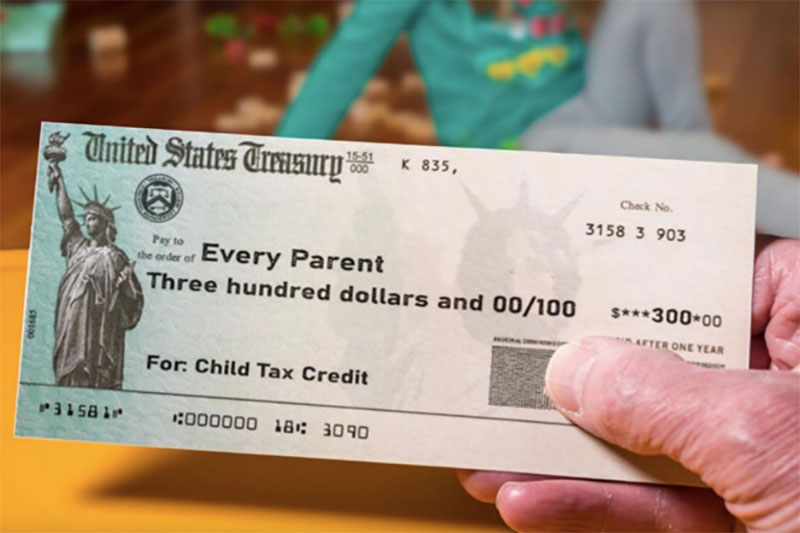How to Claim the Expanded Child Tax Credit on Your Taxes This Year
Jun 21, 2023 By Triston Martin
Are you a parent or guardian looking to maximize your tax refund this year? The expanded Child Tax Credit could be the answer for you! While claiming it can seem daunting, we're here to help make things easier.
In this blog post, we'll explain everything you need to know about how to claim the expanded Child Tax Credit — from eligibility requirements and filing tips to ensure you get the maximum benefit.
Read on for all the information on harnessing this powerful credit!
Basics of the Expanded Child Tax Credit
The expanded Child Tax Credit (CTC) is a valuable tax credit that helps families offset the cost of raising children. This credit and other provisions were recently expanded under the American Rescue Plan Act 2021.
The CTC now allows for a refundable credit of up to $3,000 per child aged 6 to 17 and $3,600 for children under 6 at the end of 2021. This credit is also fully refundable, meaning families can receive a tax refund even if they don't owe any taxes.
Who is Eligible for the Expanded Credit

The Child Tax Credit is a tax benefit the government provides to help families with the cost of raising children. To qualify for the Child Tax Credit, you must meet certain requirements.
Here are the key qualifications explained in detail:
Age Requirement:
- The child must be under 17 at the end of the tax year.
Relationship Requirement:
- Your daughter, son, stepchild, foster child, sister, brother, half-brother, half-sister, stepsister, or bloodline of any of them (such as a grandchild, niece, or nephew) must be the kid.
- The child can also be adopted or placed with you for adoption.
Dependency Requirement:
- The child must be claimed as your dependent on your federal tax return.
- The child should have lived with you for more than half of the tax year, except for temporary absences, such as school or medical treatment.
Citizenship Requirement:
- The child must be a U.S. citizen, U.S. national, or a resident alien with a valid Social Security Number.
Income Limit:
- Your modified adjusted gross income (MAGI) must be below certain thresholds to qualify for the full Child Tax Credit.
- For the tax year 2022, the phase-out begins at $75,000 for single filers, $112,500 for heads of households, and $150,000 for married couples filing jointly.
- The credit is gradually reduced by $50 for every $1,000 income over the threshold.
Credit Amount:
- The Child Tax Credit provides a maximum credit of up to 2,000 dollar per qualifying child.
- Additionally, there is an additional Child Tax Credit known as the refundable portion, which allows eligible taxpayers to receive a refund even if they owe no tax or have no taxable income. This refundable credit is limited to $1,400 per qualifying child for tax year 2022.
It's important to note that tax laws and regulations can change, so it's advisable to consult with a tax professional or refer to the IRS guidelines for the most up-to-date information on the qualification requirements for the Child Tax Credit.
Who Qualifies For Expanded Child Tax Credit

To qualify for the expanded CTC, you must meet certain eligibility requirements. If your adjusted gross income (AGI) is below the threshold of $200,000 if single or $400,000 if married and filing jointly, you may be eligible to claim the full amount of the credit.
However, if your AGI is within those thresholds, your credit will begin to phase out, and you may receive less than the full amount.
How to Claim the Expanded Child Tax Credit on Your Taxes
Once you have determined that you and your child qualify for the expanded CTC, it's time to claim it on your taxes. The first step is to fill out Form 1040 or 1040-SR, found on the IRS website. You'll need to enter your child's name, SSN, and any other information required on the form.
Once completed, you can claim the credit on line 9 of Form 1040 or line 4 of Form 1040-SR. Double-check your work before submitting your taxes, as mistakes can lead to processing delays or credit denial.
The expanded CTC allows millions of families to get much-needed relief during these difficult times.
By following the proper steps and understanding eligibility requirements, you can ensure that you claim the full amount on your taxes this year. You can get the most out of this valuable tax credit with research and preparation.
Consequences of a child tax credit error
Making errors or mistakes related to the Child Tax Credit can have various consequences, depending on the nature and severity of the error.
Here are some potential consequences of a Child Tax Credit error:
Overpayment or Underpayment:
If you make an error in calculating or claiming the Child Tax Credit, it could result in either overpayment or underpayment of the credit. Overpayment occurs when you claim more credit than you are eligible for, while underpayment happens when you fail to claim the full credit you are entitled to.
An overpayment may lead to penalties, interest charges, or a requirement to repay the excess credit, while underpayment means you miss out on the full benefit of the credit.
IRS Audits or Penalties
If the Internal Revenue Service (IRS) discovers an error in your Child Tax Credit claim, they may choose to audit your tax return. An audit involves a detailed examination of your financial records and supporting documentation.
If the IRS determines that the error was deliberate or fraudulent, it can result in penalties, fines, or criminal charges.
Delayed Refunds or Tax Liability
Incorrectly claiming the Child Tax Credit can delay processing your tax return and subsequent refund. If the IRS identifies an error in your claim, they may request additional documentation or clarification, leading to prolonged processing times.
Sometimes, the error may result in a higher tax liability, requiring you to pay additional taxes or owe penalties and interest.
Loss of Future Credits
If you consistently make errors or improperly claim the Child Tax Credit, it may raise red flags with the IRS. As a result, you may face closer scrutiny in future tax returns, making it more difficult to claim the credit or other tax benefits.
Additionally, repeated errors could lead to a loss of credibility with the IRS and potentially trigger more audits or investigations.
FAQs
What is the expanded child tax credit?
The expanded child tax credit is a refundable tax credit available for 2021 that is worth up to $3,000 per child and up to $3,600 per child under the age of 6. The American Rescue Plan Act created this credit, which can be claimed on your taxes this year.
How do I claim the expanded child tax credit?
To claim the expanded child tax credit, you must fill out Form 1040 or 1040-SR and include your total number of eligible children. You may also need to provide additional information about your qualifying children and other income details.
How do I qualify for the expanded child tax credit?
You may qualify for the expanded child tax credit if you have a dependent under age 17, your adjusted gross income is below certain limits, and the child is a U.S. citizen or resident alien. The amount of credit you can receive depends on your income level and the number of qualifying children.
Conclusion
The expanded Child Tax Credit can be an optimization for many parents and guardians this year when filing their taxes. From eligibility requirements to filing tips, we covered all the information needed to maximize how much benefit you can receive from claiming this credit. With your knowledge, it's time to understand how to claim the expanded Child Tax Credit on your taxes this year!








